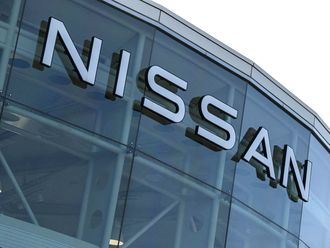
Dubai:
It’s a gap that needs to be stitched — only about 2 per cent of the online spending in the Middle East is on clothes, while the comparable number in the West is around 15-20 per cent.
“It’s only a matter of time before the trend picks up in the Gulf — it will be driven by the young who will want to spend their outdoor time on leisure and entertainment than on shopping,” said Rajiv Suri, CEO at Majid Al Futtaim Fashion. “It could be a big deal tomorrow and local retailers need to be prepared … with an entry of their own into this space.”
Fashion could well be the next growth engine for the region’s virtual marketplace. The double-digit year-on-year growth levels attained in the recent past by verticals such as smartphones and other tech buys seem to be slipping.
There are already quite a few eCommerce sites selling apparel, but by and large, this is not their volume category. Until now, the overwhelming focus has been on tech gadgets, household accessories and fragrances, the last two of which carry significant margins. The same is true on clothes, but it would seem that online shoppers are yet to get over their need to have a feel of what they are buying.
There have been earlier attempts at fashion-only eCommerce portals, but weren’t able to quite cut it, to say the least. Online vendors — those still left in an extremely volatile market — need to get on the fashion bandwagon soon.
According to market sources, selling T-shirts or other generic apparel lines may be easy enough. But for shoppers to move on to higher value merchandise in their online buying represents the biggest block. For e-tailers, this is the block they need to get rid of if they want to improve volumes as well as their operating margins.
If they look to the US, they will have noticed — quite easily — that Amazon is putting in considerable resources on its apparel business, even to the extent of having its own private label (Lark & Ro) stocked under Amazon Fashion.
“Because the regional base for online fashion shoppers is still small, a new entrant or an offshoot of an international brand name could easily get into this market,” said a market source. “Many of the brick-and-mortar retailers are already using third-party online portals to clear part of their off-season stocks, even at discounts higher than that available at the outlets.
“These will expand the shopper base and make them more comfortable with sourcing their fashion needs online.”
Regional investors could already be moving in. Alabbar Enterprises paid €100 million for a 4 per cent stake in Yoox Net-A-Porter, which has six shopping portals within its fold. Market sources say these could be scaled easily to have a pan-regional presence. (Private equity sources say retail — brick-and-mortar as well as online — and F&B specific proposals are generating a lot of interest from high net investors and institutions in the Gulf.) For the established physical store operators, all of these trends are signposting what they should be doing next. According to Suri at Majid Al Futtaim Fashion, “We are exploring online options — we want to get into it, but wrestling with the best way to do it. There are certain challenges that need to be addressed first, and these are ones that all of the region’s franchise partners face.
“The brands have their own websites and there is always this debate among shoppers here about international pricing versus local pricing.
“If you set up online operations under a brand name that is not known, consumers wouldn’t patronise or not in the numbers you want them to. These need to be decided before that decisive step is taken.”












